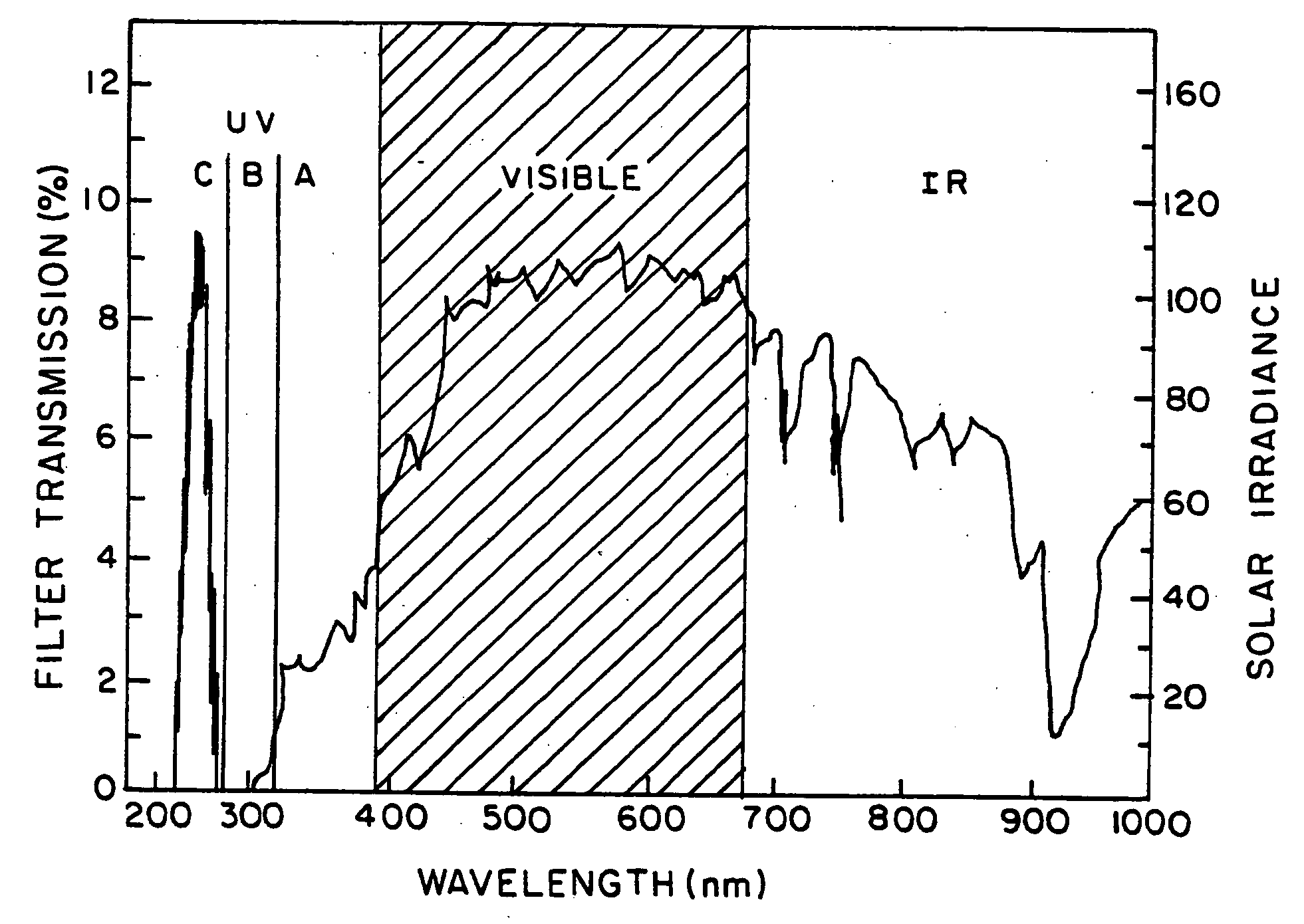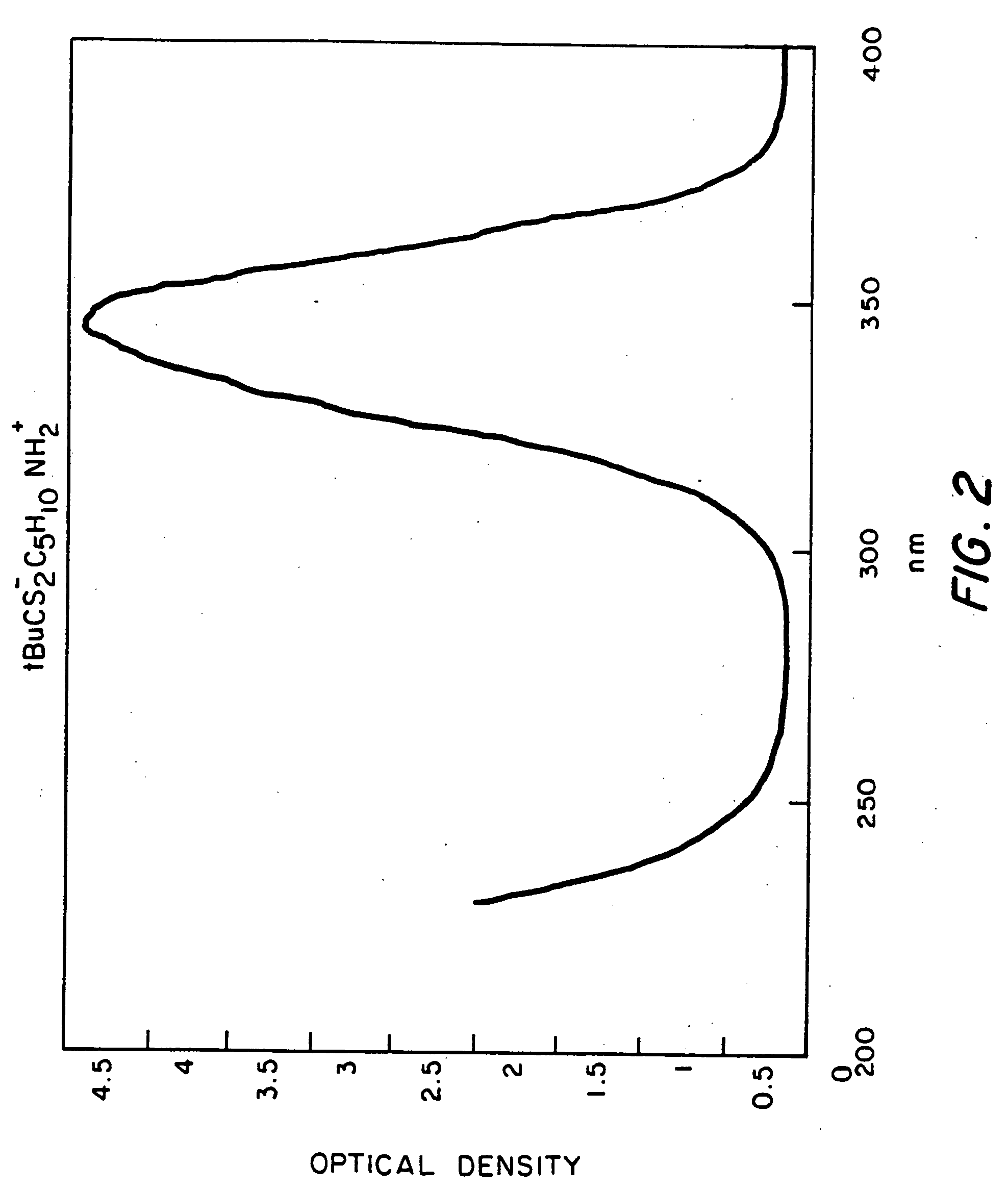Optical filter comprising solar blind dyes and UV-transparent substrates
a technology of optical filter and blind dye, applied in the field of selective optical filter, can solve the problems of inability to use these emission lines to image corona, weak relative strength of emission lines, and ultraviolet light,
- Summary
- Abstract
- Description
- Claims
- Application Information
AI Technical Summary
Benefits of technology
Problems solved by technology
Method used
Image
Examples
example 1
Chlorination of 2,7-Dimethyl1-3,6-diazacyclohepta-1,6-diene Perchlorate
[0069] A flask is charged with 0.0135 moles of the 2,7-dimethyl-3,6-diazacyclohepta-1,6-diene perchlorate and 0.0171 moles of N-chlorosuccinimide in 150 ml carbon tetrachloride, and the resulting mixture was refluxed for about 3 hours at 76° C. The resulting mixture contained several milliliters of a yellowish liquid that was immiscible with the nonpolar carbon tetrachloride solvent, which was clear. The yellowish liquid layer was separated off and diluted with distilled water to about four times its initial volume. This water solution was allowed to stand in an open beaker at room temperature for several hours of slow evaporation. Clear, needle-like crystals then precipitated out, and then were filtered off and washed with fresh carbon tetrachloride. A total of three precipitation / filtering cycles were performed on the mixture, with each cycle yielding about 100 mg of high quality crystalline precipitate.
[0070...
example 2
Preparation Chlorinated Dye in Polyvinyl Alcohol Thin Films
[0073] Thin films of polyvinyl alcohol (PVA) were grown on a quartz substrate from the evaporation of water solutions of PVA that also contained optically dense amounts of the chlorinated produce of Example 1. A sufficient dye concentration was needed to provide an absorbance of about 40 OD at the 346 nm maximum. Using Beer's law, i.e.,
[0074] Absorbance=(chromophore extinction coefficient) (concentration) (pathlength), it was calculated that a 40 OD absorbance would required a (concentration)×(pathlength) product of 0.002 moles-cm / liter. The pathlength was determined experimentally by finding the volume of PVA solution needed to coat the substrate and dividing by the area of the substrate. For the PVA solution, this initial pathlength was on the order of 0.4 nm, and thus the desired initial dye concentration was 0.05 moles / liter. As the water evaporated and the film formed, the (concentration)×(pathlength) produce remained...
example 3
Preparation Chlorinated Dye in Porous Glass Substrate
[0075] The filter using an organic dye in porous glass was prepared by first drying the Vycor disks overnight at 100° C. The disks were then soaked overnight in a 0.1% aqueous solution of the dye. The disks were then heated on a hot plate to remove the water. The disks were then filled with index matching solvent by immersing them in either diethyl succinate, diethyl phthalate or dibutyl phthalate.
[0076]FIG. 7A illustrates the relative Transmission of a filter of the invention comprising the dye prepared in Example 1 incorporated into a porous glass filter with dibutyl phthalate as a solvent. FIG. 7B shows the corresponding absorbance spectrum. Accordingly, the optical performance of the filter of the invention was substantially equal to that of the same dyes in polyvinyl alcohol. However, the dyes of the invention were significantly more stable under adverse conditions and / or long exposures to ambient conditions.
PUM
| Property | Measurement | Unit |
|---|---|---|
| wavelength | aaaaa | aaaaa |
| wavelength | aaaaa | aaaaa |
| pressure | aaaaa | aaaaa |
Abstract
Description
Claims
Application Information
 Login to View More
Login to View More - R&D
- Intellectual Property
- Life Sciences
- Materials
- Tech Scout
- Unparalleled Data Quality
- Higher Quality Content
- 60% Fewer Hallucinations
Browse by: Latest US Patents, China's latest patents, Technical Efficacy Thesaurus, Application Domain, Technology Topic, Popular Technical Reports.
© 2025 PatSnap. All rights reserved.Legal|Privacy policy|Modern Slavery Act Transparency Statement|Sitemap|About US| Contact US: help@patsnap.com



